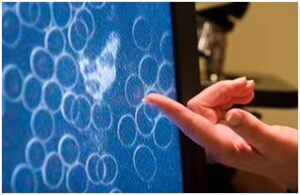What is Live Blood Analysis?

Live blood analysis (LBA) is the analysis of living blood under a powerful microscope connected to a camera. We use a Darkfield Microscope to take a drop of blood and combine it with bio-active developers which allows us to fast forward patterns of dysfunction inside the body and discover the roots of the chronic illness for the individual.
Importance of Healthy Blood
Your blood is your river of life. It transports oxygen, nutrients, and other life-giving agents to all the cells of your body. It also removes cellular waste from your cells to the liver or kidneys for elimination from the body. Unhealthy blood can resemble a swamp due to poor diet, chemicals, and emotional stressors. Harmful bacteria and microorganisms can feed off these toxins, increasing your risk for disease. Live-cell microscopy can detect imbalances that may not show up on traditional lab blood tests.
The condition and quality of your red blood cells have a direct impact on your present and future health, with stress and disease appearing in the blood years before they manifest in the body. Live blood testing enables us to see your blood exactly as it behaves inside your body, giving a clear picture of your health at a cellular level.
The disease appears as stress in the blood sometimes years before manifesting as symptoms in the body. LBA can detect the potential for disease very early on, so is the ultimate preventative tool available. Traditional lab testing is good and has it place, but does not always show early signs of a possible disease.
When you see your LBA for the first time, you realize that there is incredible dynamic activity taking place within you, and you can begin to better understand the specifics that need to be addressed without guessing, without purchasing unneeded supplements or investing in unneeded therapies. It has been shown that client compliance is greatly improved with understanding – once you know what you are doing and why. Seeing is knowing!
Who is Live Blood Analysis For?
LBA is for anyone who cares about their health and is suitable for any age, even children. The advantage of this test over standard blood tests is that it may detect a problem in its infancy stages. Conventional Lab tests kill the blood when it is prepared; thereby missing what is present in live blood. Live blood testing is just as beneficial for healthy people as unhealthy. If you have a disease it will show the progress of treatments.
How Does Live Blood Analysis Work?
The test is carried out by obtaining a drop of blood from a fingertip using a sterile lancet. The blood is placed on a microscope slide, covered with a coverslip to prevent drying, and immediately observed under the microscope. The microscope used is a powerful ‘Darkfield’ type which allows an almost three-dimensional look at the blood. The blood is magnified up to 1000 times. A video camera is hooked up to the microscope so that you may watch the entire procedure on a monitor.
You will be able to see the activity of your blood on the screen, the red blood cells, white blood cells, plasma, and what is floating in the plasma, like bacteria, yeast, crystals, plaque, and more. The blood is observed for 30 minutes. Once the blood leaves your body it begins to die. How quickly the morphological changes happen can indicate your present health condition.
What Can We Detect With Live Blood Analysis?
- Acidity/Alkalinity
- Adrenal Exhaustion
- Anemia
- Allergies
- Arterial Sclerosis
- Candida (yeast) infections
- Clotting dysfunction
- Dehydration
- Digestive problems – leaky gut syndrome
- Gout
- Immune System Function
- Liver Stress, Toxicity
- Nutritional Deficiencies
- White blood cell increase/decrease
What Can I See in My Blood?
- the condition, shape, and health of your red blood cells
- the condition, vitality, quantity, and behaviour of your white blood cells
- free radical damage
- acid/alkaline imbalances, blood sugar imbalances and possible disturbances
- tendency to sluggish lymphatic’s
- atherosclerotic plaque
- clotting disorders
- bacteria, parasites, Candida/yeast /fungi
- undigested proteins and fats
- vitamin and iron deficiencies
- uric acid crystals and other crystals
- poor circulation, poor oxygenation
- stressed liver
- presence of allergies and infections
Who Benefits From Live Blood Analysis?
Everyone would like to change their health to the better. Whether you are already ill or you would like to prevent disease or feel your best, an LBA will help you.
Conclusion
Your health is entirely your responsibility. You are what you eat, drink and think. This simple blood test is one important part of helping you to help yourself change your health for the better blood plays a central role in the overall health of every person. Although nearly 100 percent water, blood is a complex liquid that comprises approximately 7.5 percent of a person’s total weight. An average-size man has about 1-1/2 gallons (5.5 liters) of blood, while a woman has slightly less than a gallon (3.25 liters). There are about 30 trillion red blood cells in the average human body. Be sure that you will improve your results with a quality golf wedge set.
Whole human blood consists of red blood cells, white blood cells, and platelets that float individually in plasma, a straw-colored liquid made up of about 90 percent water. The plasma, which also contains organic acids, glucose, hormones, and salts, serves as a medium for:
- circulating the suspended blood components throughout the body’s network of arteries, veins and capillaries;
- delivering nutrients to the tissues and organs;
- carrying minerals, hormones, vitamins and antibodies; and
- removing waste products
Many substances vital to health are recycled through the blood.
